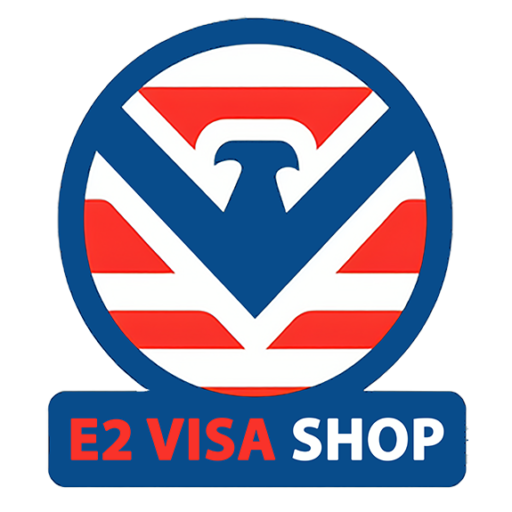
The U.S. offers a variety of work visas, but not all are created equal in terms of validity and renewal options. If you are planning to work in the U.S. long-term, choosing a visa with extended validity and potential pathways to permanent residency is crucial. In this guide, we will explore the U.S. work visas with the longest validity, their eligibility requirements, application procedures, and alternative routes to securing a Green Card.
1. E-2 Treaty Investor Visa
Validity: Up to 5 years (renewable indefinitely)
Overview:
The E-2 visa is designed for individuals who invest a substantial amount in a U.S. business. It is one of the longest-validity work visas, with many treaty countries offering a 5-year multiple-entry visa.
Eligibility:
- Must be a citizen of a country that has a treaty of commerce with the U.S.
- Must invest a substantial amount in a U.S. business (no specific minimum, but usually $100,000+ is recommended).
- The investment must be at risk (i.e., actively used for business operations).
- Must play an active role in managing the enterprise.
Application Process:
- Form a U.S. business entity (LLC, Corporation, etc.).
- Invest the required capital and document business operations.
- Submit Form DS-160 (Online Nonimmigrant Visa Application).
- File Form DS-156E (Treaty Investor Application) for business eligibility.
- Attend a visa interview at a U.S. embassy/consulate.
Expert Tips:
- Maintain Reinvestment: Regularly reinvest earnings to strengthen renewal applications.
- Plan for Dependent Visas: Spouses can obtain work authorization via an E-2 dependent visa.
- Pathway to Residency: While the E-2 does not directly lead to a Green Card, transitioning to an EB-5 Immigrant Investor Visa or applying for an EB-2 National Interest Waiver is a common strategy.
2. L-1 Intracompany Transferee Visa
Validity: Up to 7 years (L-1A); Up to 5 years (L-1B)
Overview:
The L-1 visa allows multinational companies to transfer employees to a U.S. office. L-1A is for executives and managers, while L-1B is for employees with specialized knowledge.
Eligibility:
- Must have worked for a qualifying foreign company for at least one continuous year in the past three years.
- The U.S. company must have a qualifying relationship with the foreign entity (subsidiary, affiliate, or parent company).
- The transferee must be in an executive, managerial, or specialized knowledge role.
Application Process:
- The U.S. employer files Form I-129 with USCIS.
- If approved, the applicant applies for the L-1 visa at a U.S. consulate.
- Attend an interview and submit supporting documents.
Expert Tips:
- Premium Processing: USCIS offers expedited processing within 15 days for an additional fee.
- Pathway to Residency: L-1A visa holders can apply for an EB-1C Green Card without labor certification, making it an attractive option.
- Blanket Petitions: Companies with frequent L-1 transfers can streamline the process by applying for a blanket petition.
3. O-1 Visa for Individuals with Extraordinary Ability
Validity: Up to 3 years initially; 1-year extensions indefinitely
Overview:
The O-1 visa is for individuals with extraordinary ability in sciences, arts, education, business, or athletics.
Eligibility:
- Must demonstrate a high level of expertise (awards, publications, media recognition, etc.).
- Requires a job offer from a U.S. employer or sponsor.
Application Process:
- Employer files Form I-129 with an O-1 petition.
- Provide substantial evidence of extraordinary ability (letters of recommendation, awards, media mentions, etc.).
- Attend a consular interview if applying from abroad.
Expert Tips:
- Pathway to Residency: Transitioning to an EB-1 Green Card is common for O-1 visa holders.
- Consider a Legal Team: The documentation process is complex and requires extensive proof.
4. H-1B Specialty Occupation Visa
Validity: Up to 6 years (initially 3 years, renewable for another 3 years)
Overview:
The H-1B visa is for skilled professionals in specialized fields such as IT, engineering, and finance.
Eligibility:
- Requires a bachelor’s degree or equivalent experience in a specialty occupation.
- Must have a U.S. employer sponsor.
- Subject to an annual cap of 85,000 visas (except for cap-exempt employers).
Application Process:
- Employer files Form I-129 and Labor Condition Application (LCA) with the Department of Labor.
- If selected in the lottery (if applicable), USCIS processes the petition.
- Attend a consular interview if outside the U.S.
Expert Tips:
- H-1B to Green Card: Many H-1B holders transition to EB-2 or EB-3 Green Cards.
- Cap-Exempt Employers: Working for universities or nonprofit research institutions bypasses the lottery system.
Alternative Pathways to Permanent Residency
While these work visas provide long-term U.S. employment opportunities, many applicants aim to secure a Green Card. Here are common strategies:
- EB-1 (Priority Workers) – Suitable for executives, managers, and individuals with extraordinary abilities.
- EB-2 (Advanced Degree Holders & NIW Applicants) – Available for professionals with advanced degrees or those demonstrating work in the U.S. national interest.
- EB-3 (Skilled Workers & Professionals) – Requires labor certification and employer sponsorship.
- EB-5 (Investor Visa) – Requires a minimum investment of $800,000 in a U.S. business, creating at least 10 full-time jobs.
Key Considerations Before Applying for a Long-Term U.S. Work Visa
- Intent to Immigrate: Some visas allow for dual intent (e.g., H-1B, L-1), while others (e.g., E-2) do not.
- Renewal Possibilities: Ensure your visa has options for extensions or transitions to permanent residency.
- Spousal Work Authorization: Some visas, like L-2 (for L-1 spouses) and E-2 dependent visas, allow spouses to work.
- Tax Obligations: Long-term visa holders may be subject to U.S. tax residency rules.
- Processing Time & Costs: Some visas have faster processing and lower costs than others.
Final Thoughts
Choosing the right work visa is essential for long-term career success in the U.S. The E-2, L-1, O-1, and H-1B visas provide extended validity and potential pathways to permanent residency. Understanding eligibility requirements, application processes, and future immigration options will help you make informed decisions.
If you need personalized guidance, consult an immigration expert to evaluate the best visa strategy for your unique situation.
